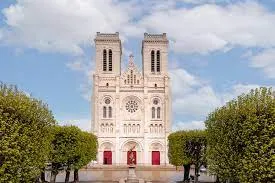Introduction
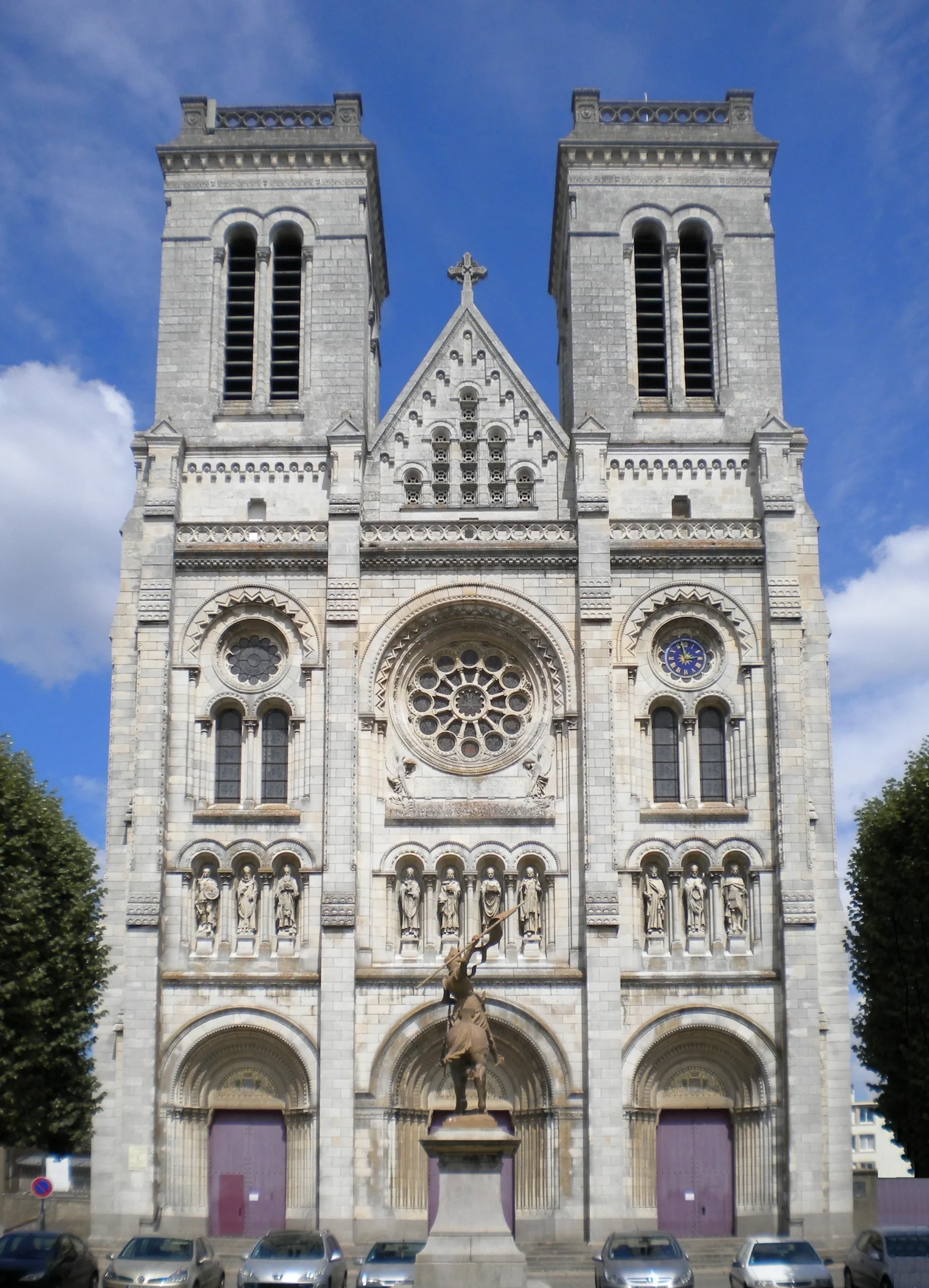
The Basilica of Saint-Donatien-et-Saint-Rogatien is a French neo-Romanesque basilica located in the Malakoff – Saint-Donatien district of Nantes. Its main façade overlooks the Place des Enfants-Nantais . It is one of the two basilicas in the city, along with the Basilica of Saint-Nicolas. Dating from the 19TH century, it is dedicated to Saint Donatien of Nantes and his brother Saint Rogatien , the first Christians of Nantes, martyred in the city at the end of the 3RD century. In addition to the basilica, the site also includes a cemetery and the Saint-Étienne chapel, protected as historical monuments . Basilica of St. Donatian and St. Rogatian is a Catholic minor basilica in Nantes, France. It was elevated to the rank of minor basilica in 1889.
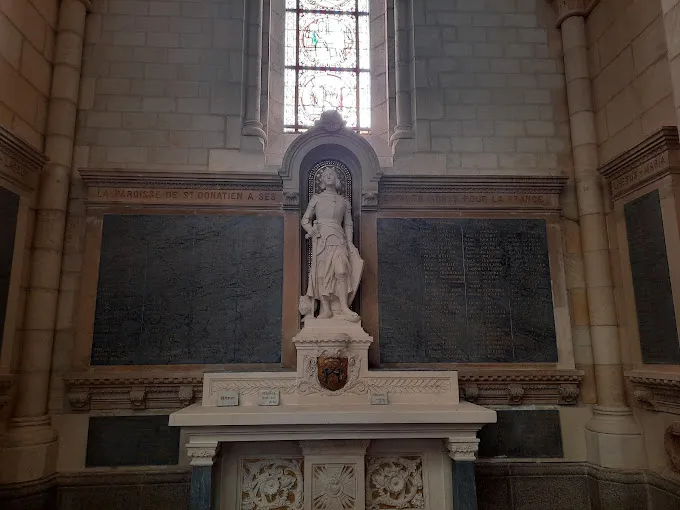
The Building stands on the site of an ancient Gallo-Roman villa . Excavations carried out in 1873 uncovered an ancient pagan cemetery, a pit in the centre of the apse containing 27 nails attributed to the coffins of the two martyrs and revealed that four churches were successively built.
The Promulgation of the Edict of Constantine , nine years after their death, saw the development of a cult around the bodies of the two brothers who died as martyrs, first dislocated on the rack, whipped and then led out of the city not far from the current basilica, at no. 63 rue Dufour , where an executioner thrust a javelin into their throats and then cut off their heads (two stone crosses mark the place of their executions). According to tradition, their bodies were placed, 21 years after their death, in a sarcophagus made of grey marble from the Pyrenees, measuring 2.25 metres long and 75 centimetres wide. The relics then attracted pilgrims, requiring the creation of an “Honor Guard” made up of the monks of Saint-Martin . The parish was then considered by the people of Nantes as a “holy land”
The first church is said to have been built according to tradition on the family property of the Nantes saints around 490. The Norman invasions destroyed the first building which, once peace had returned, made way for a new church around the year 980 . However, according to Dubuisson-Aubenay , remains of the original sanctuary still existed in the 17th century , notably the old apse.
The March 16, 1739, the first stone of the reconstruction was laid by Jean-Marie de Trevelec, advisor to the Parliament of Brittany , and his wife Françoise Charette.
Transformed into a hospital during the Revolution , it was sold in 1796. Once the church was returned to worship in 1802, the missing parts were rebuilt from 1804, giving rise to a larger cruciform church, consecrated by Bishop Duvoisin , the March 28, 1806 .
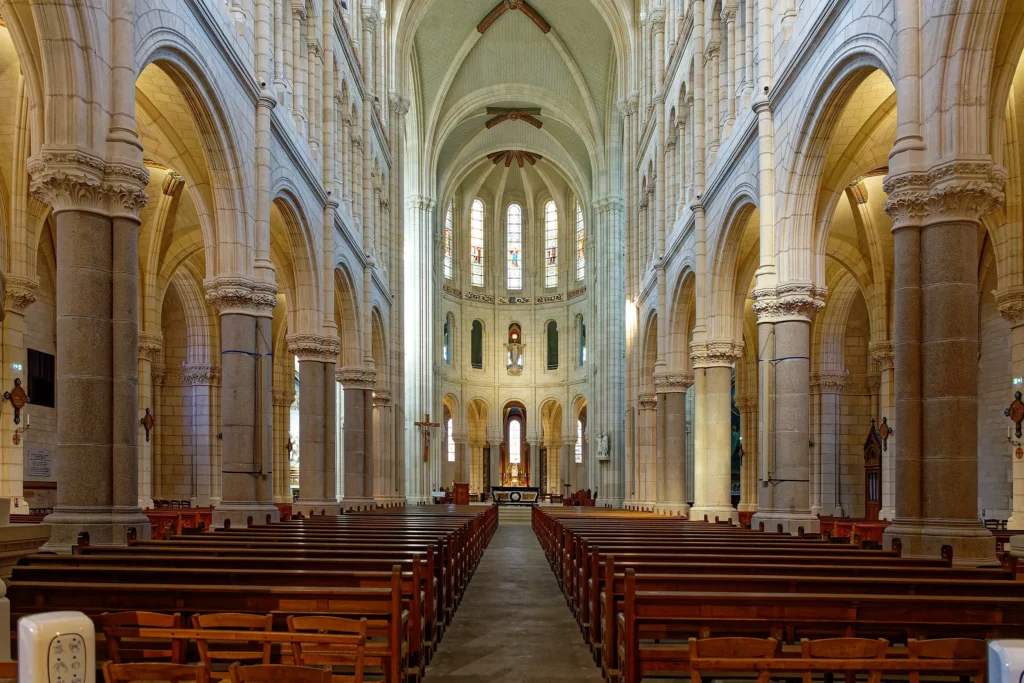
The 19th Century Building
The project began to take shape after the Franco-Prussian War of 1870, further reinforced by a strong resurgence of religious sentiment in a troubled political and social context. Bishop Félix Fournier , Bishop of Nantes, had in fact made a vow to build a basilica in honor of the two patrons of his diocese if it were preserved from the invasion of the Prussians, which was the case .
Thus the architect Émile Perrin , the brother of the priest of Saint-Père-en-Retz whose church he was also building, drew up the plans for a sanctuary in the primitive neo-Gothic style . Louis Liberge , son of the architect François Liberge , the builder of the Saint-Clément church in Nantes , ordered the work which began onOctober 10, 1872by digging the foundations and will last nearly thirty years. After having carried out some excavations, Bishop Fournier blessed theSeptember 12, 1873, in the presence of 300 priests, the first stone which is placed on the right pillar of the sanctuar .
A papal rescript datedMarch 14, 1889grants it the title of basilica and theApril 14, Mgr Lecoq , Bishop of Nantes , promulgates pontifical decree. The June 13, 1881 construction of the façade, inspired in Liberge by that of Notre-Dame de Paris , began . Work on the façade completed the building in 1901, with the latter receiving two twin towers 44 metres high (nevertheless devoid of the two spires initially planned). Once the towers were completed, the cross was put in place , dominating the chancel of the gables and blessed by Bishop Rouard.
The painter Alexis Douillard (1835-1905), created a wall decoration for the chapel of the Sacred Heart , Consecration of the diocese of Nantes by Monsignor Fournier.
The Building in The 20th Century
In 1902, the church received its ten bells , each weighing between 291 and 4,614 kg , cast by the Bollée company in Le Mans and blessed by Bishop Rouard onJune 18The chime of the clock reproduces the famous tune of Westminster Quarters , the chime of the Palace of Westminster , the seat of the British parliament in London. In 1971, the renovation of the choir was entrusted to the architect Philippe Joëssel
The Building in The 21st Century
The fire of the June 15, 2015. The June 15, 2015, a violent fire ravaged three-quarters of the roof. According to the departmental director of public safety, the fire started accidentally while two roofers were working on the renovation of the building, repairing a lead gutter using a blowtorch .
The October 20, 2015, the repair work on the basilica has begun. It was divided into three phases and was due to be completed in 2019. It will improve safety features, including the installation of dry columns up to the top of the building, designed to facilitate emergency services in the fight against fires.
The reopening of the basilica is planned for spring 2021 and the estimated cost of the work is 13 million euros. The basilica reopened its doors on August 29, 2021 after six years of closure 18 . The parish was then entrusted to the Chemin Neuf Community .
Spiritual and Missionary, Parish and Diocesan History
Since its construction, the basilica has been intended for Catholic Christian worship. Despite the historical episodes of appropriation ( 1905 law ) and closures for example for works, the primary function of this building is religious with several dimensions, and this remains to this day its main purpose , even if it also hosts visits and certain shows in accordance with the destination and dignity of the place, such as concerts of sacred music or choral music. As a parish church , it brings together the local Christian community ( parish ).
As a basilica , it is intended to be a special place for the gathering of the People of God . Its large dimensions have allowed it to host many major celebrations in the diocese of Nantes , particularly at certain times, for example following the closure of Nantes Cathedral for renovations.
The territory of the parish has evolved over the centuries. Going as far as Saint Joseph de Porterie at one time, new parishes were then created on its original territory, accompanying the population increase and causing the reduction of its surface area. More recently, parish groupings have taken place, to this day the parish brings together the former parishes of Sainte Elisabeth , Saint Dominique and Saint Donatien.
The Saint-Donatien Cemetery and The Saint-Étienne Chapel
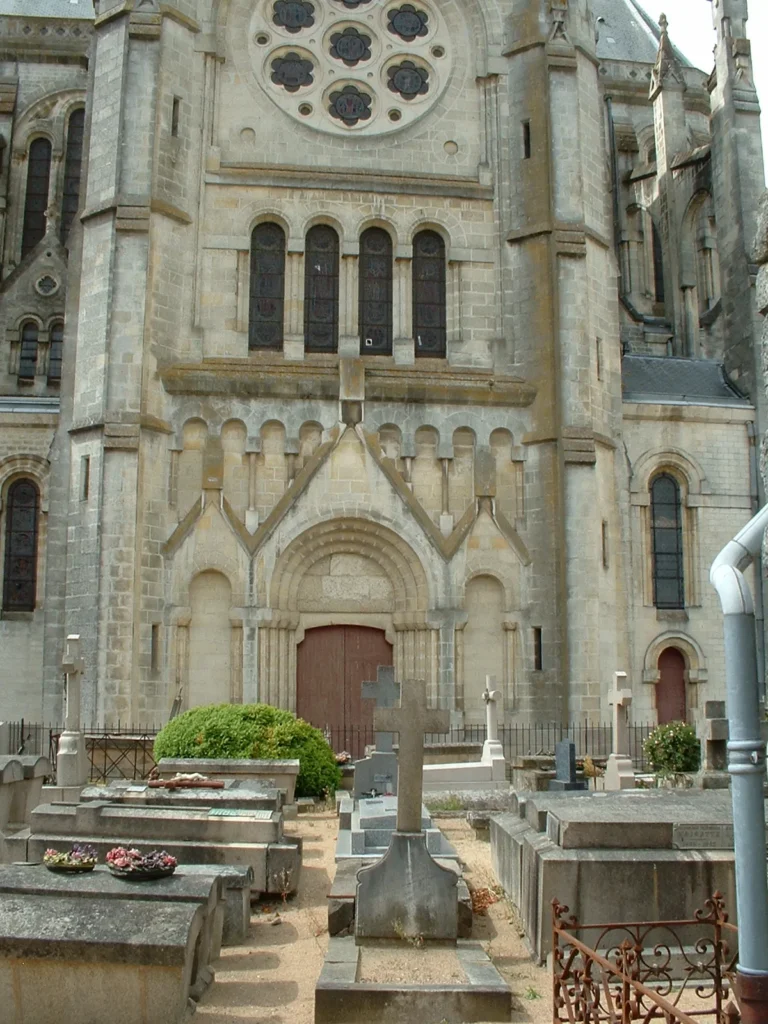
The land adjoining the basilica to the south and east is occupied by the Saint-Donatien cemetery , the oldest Christian burial place in Nantes still in use. In the centre of the southern part of the cemetery is the Saint-Étienne chapel (which has also been called “Saint-Georges” or ” Saint-Agapit “). It is a rectangular building 17.5 metres long by 7.5 metres wide, with a gabled roof reaching just under eight metres in height. It is the oldest religious building in the diocese, since the oldest parts date back to the very beginning of the 6th century . According to the historian Albert Travers , this building was built on the orders of Bishop Epiphanes to house the relics of Saint Stephen brought back from Jerusalem no later than 5065 .
The façade was remodeled in a neoclassical style in the 18th century . A “traditional” well was dug outside, just in front of the chapel. Pilgrims could wash their hands there before entering the sanctuary. This well, which disappeared at the end of the 20th century , was for Léon Maître proof of the antiquity of the chapel.
This building has been listed as a historic monument since December 26, 1984.
Feast Day
Feast day: 24th May
Donatian and Rogatian Feast day: May 24. Donatian and Rogatian were brothers who were martyred for their faith in the third century.
Church Mass Timing
Monday : 09.15 AM and 12.00 PM
Tuesday : 09.15 AM and 06.00 PM
Wednesday : 09.15 AM and 12.00 PM
Thusday : 09.15 AM and 12.00 PM
Friday : 09.15 AM and 12.00 PM
Saturday : 08.00 AM and 6.00 PM
Sunday : 09.00 AM and 11.00 AM
Church Opening Time:
Monday : 08:30 AM – 07.00 PM
Tuesday : 09:30 AM– 07.00 PM
Wednesday : 08:30 AM – 07.00 PM
Thursday : 08:30 AM – 07.00 PM
Friday : 08:30 AM – 07.00 PM
Saturday : 08:30 AM – 07.00 PM
Sunday : 09:30 AM– 07.00 PM
Contact Info
Address :
Pl. des Enfants Nantais, 44000 Nantes, France
Phone : +33 2 40 74 14 38
Accommodations
Connectivities
Airway
Nantes Atlantique Airport (NTE) to Basilica of St. Donatian and St. Rogatian,Nantes, distance 24 min (16.4 km) via N844.

